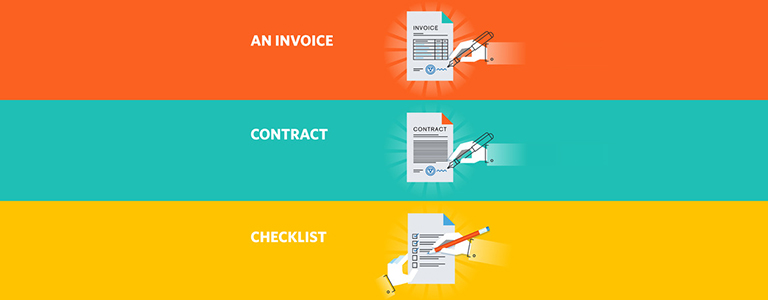COVER STORY OF THE MONTH
Driving Process Excellence in Accounts Payable with Digital

A famous quote from Henry Ford goes “Paying attention to simple little things that most men neglect makes a few men rich.” The confidence and risk appetite for enterprises went into a reverse in 2015, led by sluggish growth in advanced economies, stubbornly low commodity prices, weak global trade, and diminishing capital flows amongst others. Sources for new revenue growth remains difficult and the CFO organization has increasingly started focusing on fundamentals to further sharpen focus on cost control. At the same time, competitive pressures continue to only get stronger, requiring the continuous investment in innovation and transformation to retain and grow market share. In such a scenario, the C suite is increasingly looking at the procurement organization as one of the key levers to deliver operational efficiencies, increase productivity and reduce costs.
A 2016 study by the Hackett group “World-class procurement organizations continue to significantly outperform the peer group in procurement service delivery cost and productivity, operating at 18% lower cost and with 28% fewer FTEs. World-class procurement also has a significantly higher procurement return-on-investment (ROI) (i.e., the ratio of total savings generated by procurement to its total operating cost) – a 9.5x payback on investment in procurement compared to 4.57x for non-world class. However, even for world class, this number is losing ground as cost reductions and savings are forecasted to level out over the next four to five years. World-class procurement has to find new ways to continue to unearth value”.
The accounts payable (AP) process plays a very important role in the overall procure to pay process. Historically procurement and the AP team have operated in siloes, each reporting to a different function within the organization. When they are truly aligned and closely collaborate with each other, they bring greater value to the organization by ensuring faster processing times leading to faster payment and early payment discounts. Better transparency, visibility, compliance and cost savings via early payment discounts can truly bring significant wins to enterprises.

An average enterprise receives close to 75% of its invoice in manual format including pdf’s, emails, fax, paper etc. Irrespective of whether the invoice is in a physical or electronic format, the cost of data extraction from these invoices is a cumbersome and potentially error prone process. Additionally, the cost of validations, workflows, exception handling, three way match to ultimate posting and payment is laborious. There is little visibility to the overall process and where an invoice is pending at a particular time. A lot of time goes in responding to supplier queries and there is visibility to liabilities only upon invoice posting. The overall service delivery is sub-optimal both to the internal organization as well as to suppliers leading to poor relationships, high number of transactions simply to correct errors and associated increase in costs. This also has an impact in terms of being able to attract and retain good talent as well as on overall employee experience.
Most enterprises are recognizing that they need to re-allocate resources from transactional to value added activities. Large volumes of transactional activities and excellence in service delivery is being met via investment in digital technologies. The Hackett Group research has found that world class procurement has approximately 71% lower cost per order than the others. A data capture solution identifies, extracts and convert data into a digital format. Automated checking for duplicates and validations with master data, purchase order, goods receipt etc. ensures that any exceptions are immediately highlighted and a workflow is routed for exception handling and audit trail. Once the approvals are in place, the system ensures automated posting into the ERP. Best in class solutions come pre-integrated with leading ERP’s, enabling mobile integration for approvals and bringing down the cycle time to process by a factor of over 60%. With auto alerts and integration with supplier portal, the end to end process is seamless since suppliers have full visibility in the process. This in turn brings down supplier queries and results in better supplier relationships.

With detailed analytics and dashboards, the management has full preview to various data cuts including people productivity, liabilities, cycle time to invoice, ageing reports, exception analysis etc. This in turn leads to effective decision making for continuous improvement both in the process as well as setting the right expectations with suppliers.
In addition to investment in automation, it is also imperative to reinforce a formal service delivery model via shared services / global business services to optimize the process and deliver continuous improvements. Several enterprises have some form of established service delivery model, but it is important now more than ever to assess the processes therein, knock off redundant processes, ensure technology alignment with the business process and drive insights from analytics on key performance indicators that will in turn feedback to create a continuous cycle of improvement.

There are several innovations being adopted by enterprises in this area. Dynamic discounting is the process that allows the buyers and suppliers to dynamically change payment terms to accelerated payment based on sliding scale discount. With the advanced algorithms in Dynamic Discounting, suppliers can opt for dynamic discount or select the date for payment and the system will let them know the discount based on an agreed rate. A recent research suggest that with AP automation, it is now possible for enterprises to release payment within say 10 days (typical cycle time is brought down from 23 to 5 days) vs a standard payment cycle of 30 days, and if dynamic discounting is added on top, it allows enterprises to capture at least 50-70% of all the discounts offered. In the current scenario where interest rates are really low, the advantage with early payment and maximizing discount capture is really a no-brainer.
Even with OCR and invoice management solutions, the AP team is still required to ensure that the invoices are scanned appropriately, and the necessary tasks are properly performed. With Robotic Process Automation, enterprises can handle millions of tasks quickly, cheaply and effectively. They can work 24/7/365 while ensuring consistency and accuracy at the same time.
Advanced analytics, KPI dashboards and visualization allows the CXO’s and key members in the AP team to effectively control working capital and calibrate cash management. An execution plan for continuous process improvement can be put together deriving insights from analytics such as reasons for dispute, average number of invoices per AP payment, reasons for delay by processor, by supplier etc.
In terms of execution, the starting point would be to determine the key current pain areas and total number of invoices processed per year. It is important to determine which pain areas are absolutely imperative to address and accordingly incorporate this as an intrinsic part of the technology evaluation process. Collaborating with multiple stakeholders including suppliers and ensuring adoption of the new process and technology is imperative to change management. Finally, it is important to review the new process in action, and determine what continuous improvements to make that will further help in improving ROI and reducing costs.
The Accounts Payable function is no longer a standalone function with independent objectives. It is a strategic function within finance and procurement and has the potential to emerge as a big enabler of working capital optimization and cost reduction outcome for an enterprise. Done well, it can be a golden parachute for the business to bring in great efficiencies and reduce costs.














